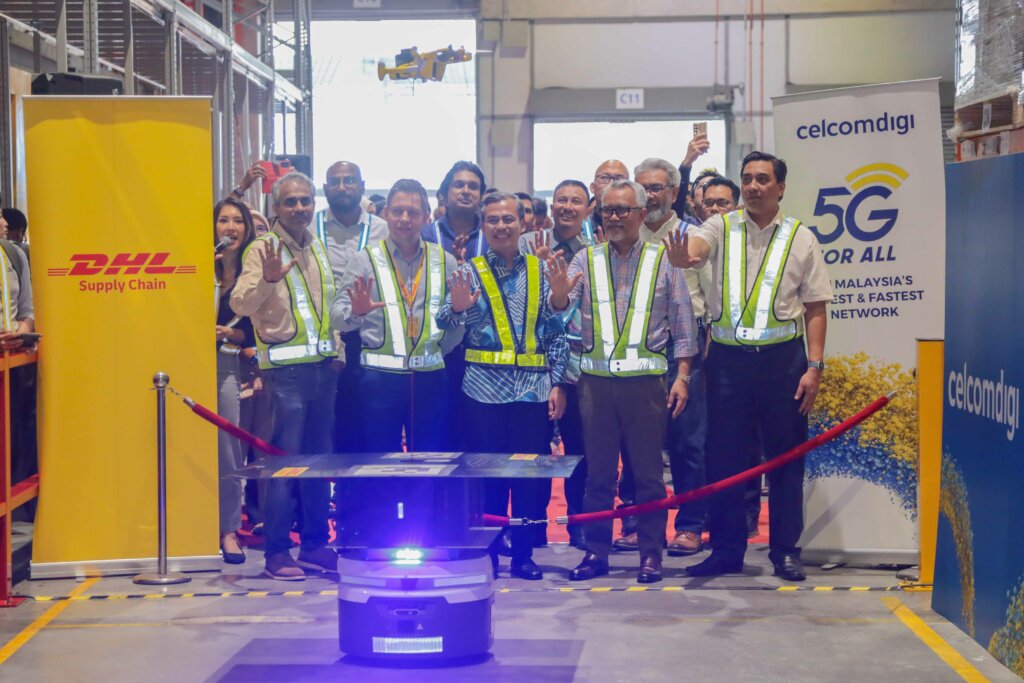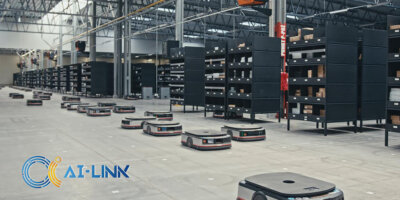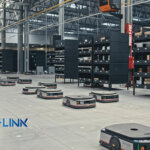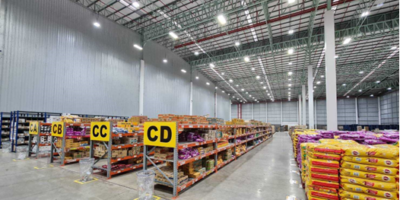
5G perfects AI in warehouses. (Image generated by AI)
5G is key for AI autonomous warehouses
- AI in warehouses needs 5G to work with minimal disruption.
- An automated inventory management solution is using 5G powered and AI-enabled autonomous drones in Malaysia.
- Significant efficiency and productivity gains are achieveable in warehouse inventory management.
One of the biggest benefits of 5G is its ability to improve network connectivity, especially in lowering latency for autonomous capabilities. With more and more use cases being developed for autonomous technology, low latency is paramount, especially in ensuring the solutions can work properly in real-time scenarios.
Embedded with AI, autonomous use cases are in many industries today. Autonomous vehicles remain one of the most critical use cases that need low latency to work perfectly. But apart from that, there are also autonomous robots and machines in manufacturing facilities and warehouses that are revolutionizing the supply chain.
Almost all modern warehouses today are built with robotics and automation at their core. These AI warehouses not only rely on technology but also have a strong network to run. According to a report by the Institute of Supply Chain Management, through 5G deployment, new sensors and devices could drive more reliable and more advanced automation than is possible with current WiFi standards, opening up everything from industrial robots to augmented reality.
“A 5G warehouse will be one where automation is everywhere you look, both invisible (in the form of sensors) and visible (in the form of machinery and devices). This could be autonomous vehicles, rail-bound storage and retrieval systems, portable scanners, networked phone applications, robotic packaging systems, and more. All of these would be constantly communicating with each other, with a warehouse management system acting as the conductor of this grand digital orchestra. The human element would be oversight, fulfilling roles that the robots still find difficult (such as picking and packing oddly shaped or delicate items), and maintenance,” said the Institute.
When it comes to AI in warehouses, the world has already witnessed many use cases developed by tech companies. These solutions have also been continuously adapted to modern warehouses, improving the entire logistics process. In fact, the warehouse robotics market was worth some US$6.1 billion worldwide in 2022. One of the reasons for the increased adoption of AI was to deal with the shortage of labor during the Covid-19 pandemic. According to the consulting group Next Move Strategy Consulting, by 2030, this market is expected to reach just under US$16 billion.

AI in warehouses can be a gamechanger for the supply chain.
5G and AI warehouses in Malaysia
The Southeast Asian region can be considered the warehouse of the world, given the region’s key location in the global supply chain. As such, the region is home to many warehouses and is also the hub for many businesses, especially in the manufacturing sector. Most of the warehouses in the region are technology-focused, with automation ensuring processes are carried out with minimal disruption.
In Malaysia, CelcomDigi Berhad and DHL Supply Chain Malaysia (DHL) have initiated the country’s first 5G-powered AI autonomous inventory management system. Supported by CelcomDigi’s 4G LTE network and 5G connectivity, DHL’s Integrated Logistics Centre located in Shah Alam will be equipped with the latest AI and robotic solutions, for optimized and efficient inventory management.
Some of the new capabilities in the AI warehouse include autonomous drones which DHL will use to carry out daily inventory management. Other capabilities include operational tasks with automated stocktaking solutions and computer vision technologies to run processes independently and without human error. The solution will enable efficient stock counting operations, achieving up to 20 times efficiency with up to 100% precision and accuracy. The solution enhances space utilization within the warehouse and reduces daily electricity consumption.

5g and AI help DHL achieve efficiency.
Delivered through its newly set up Innovation Centre, CelcomDigi’s collaboration with DHL uses 5G technology and AI solutions for robotic inventory management systems, providing enhanced and efficient multi-story warehouse management at optimum standards. The collaboration is a pivotal initiative to unlock synergies between different industries, delivering elevated logistic operations within an AI-driven digital ecosystem.
“The collaboration between our Innovation Centre and DHL demonstrates the real value and benefits of 5G technology, robotics, and AI as part of our continuous effort to drive 5G adoption and enablement effectively with Malaysia’s enterprises and digital ecosystem at large.
As two different industries embrace innovation and digital transformation through productivity and cutting-edge digital solutions, we are reimagining warehouse logistics with improved efficiency of daily operations. We are committed to building the nation’s most innovative digital ecosystem by co-creating new synergies between different industries, implementing more innovative solutions that will fuel their efficiency and growth, enabling Malaysian businesses to play a leading part in the global digital revolution and digital economy,” commented CelcomDigi CEO Datuk Idham Nawawi.
Mario Lorenz, country managing director for DHL Supply Chain Malaysia said that the 5G-powered AI autonomous inventory system is not just an achievement, but a testament to what is possible when industry leaders join forces to push the boundaries of innovation.
READ MORE
- Safer Automation: How Sophic and Firmus Succeeded in Malaysia with MDEC’s Support
- Privilege granted, not gained: Intelligent authorization for enhanced infrastructure productivity
- Low-Code produces the Proof-of-Possibilities
- New Wearables Enable Staff to Work Faster and Safer
- Experts weigh in on Oracle’s departure from adland






